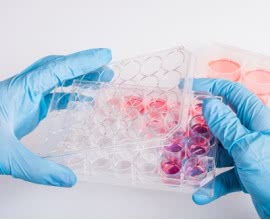Natural versus Conventional IVF
The question of quality versus quantity plagues us in many realms of life. So here you get a chance to delve into the question once again, just this time with regards to fertility treatment. Historically, in vitro has relied on maximizing success rates by collecting as many eggs as possible within once cycle, but treatment does not always need to focus on the quantity of eggs.
Natural IVF
The basic understanding of natural in vitro fertilization revolves around drug reliance. The natural method works within the female patient’s own cycle and thus negates the need of some medications. With no need to shut down the menstrual cycle or to produce more eggs than usual, IVF specialists focus on only the development of the single follicle that your body will naturally choose.[1]

Conventional Reliance on Down-regulation
Once a woman begins her cycle, the few follicles produced by the body begin maturing. Only one of these follicles eventually releases, which leaves the rest to disintegrate until more follicles form and the whole process repeats. The luteinizing hormone (LH) and follicle-stimulating hormone (FSH) act as important triggers for both of these processes and, thus, down-regulation medications used within conventional IVF treatment either stimulate the follicular maturation or inhibit their disintegration.[2]
Focusing on the Quality
As mentioned previously, one follicle eventually dominates over the others and thereby gains sole support and nutrients from the body to reach full maturity. While the secondary follicles can theoretically survive with the help of hormone medications, this conventional method disregards the fact that the body successfully determines the most viable egg for fertilization. So, for women that have diminished ovarian reserves, multiple poor responses to fertility stimulants and/or have experienced cycle cancellation, natural IVF can work for them. This process was developed to support the strongest egg with less disruption to the womb’s overall environment.[3]
Note that it may be an indication that egg quality is poor if high dosages of hormones could not significantly stimulate the ovaries.[4]
These are some of the ways in which the quality of egg development may be facilitated during Natural IVF.
-
More consultations to monitor the growth and maturation of the strongest follicle
-
Postponing ovulation by a day or several hours, either by injecting an GnRH antagonist or by taking a low-dose of clomiphene citrate (CC) and/or an anti-inflammatory drug like ibuprofen
-
Retrieving oocytes by suction and flushing the follicle
-
Suppressing LH levels until the pregnancy test results come back [5]

Other Reasons to Choose Natural IVF
Natural IVF has been particularly interesting to those whom wish to save money by cutting down on prescription payments, as well as for those whom wish to avoid health risks or have little interest in embryo cryopreservation. It mostly suits women of younger ages and, on the opposite spectrum, women with very low ovarian reserve. Most importantly, if time is of the essence, note that one cycle of conventional IVF and the necessary recovery cycle takes three months, during which three cycles of natural IVF could have been performed. Several studies have shown, however, that natural IVF lasts up to 30% longer and averages between 2.9-3.5 cycles to achieve pregnancy in contrast to the conventional method.[6]
Therefore, a quick calculation, health assessment and assertion of your interests should help you decide which style of IVF suits you and your partner best.
Sources:
[1] Nargund, Geeta. “Comparing Natural IVF to Conventional IVF.” Createfertility.co.uk, Create Health, 2 Jan. 2018, www.createfertility.co.uk/blog/comparing-natural-ivf-to-conventional-ivf.
[2] Gurevich, Rachel, and Leyla Bilali. “How Down-Regulation Is Used to Ensure IVF Success.” Verywellfamily.com, Dotdash, 3 Feb. 2020, www.verywellfamily.com/down-regulation-1960116.
[3] Nargund, Ibid.
[4] Gurevich, Rachel, and Anita Sadaty. “Canceled IVF Cycle? Why It Happens and What’s Next.” Verywellfamily.com, Dotdash, 11 Jan. 2020, www.verywellfamily.com/canceled-ivf-cycle-4151945.
[5] Wolff, Michael Von. “The Role of Natural Cycle IVF in Assisted Reproduction.” Best Practice & Research Clinical Endocrinology & Metabolism, vol. 33, no. 1, 9 Nov. 2018, pp. 35–45., doi:10.1016/j.beem.2018.10.005.
[6] Ibid.














